
What Are the Top 10 Frameworks for App Development?
2025-11-08 • RedSun IT Services
Top 10 Programming Frameworks for App Development
Picking the right framework is critical as we build modern web and mobile apps. In this guide of the top 10 frameworks for application development, we introduce each framework's purpose and benefits. We cover present, trending development tools, including Flutter from Google and SwiftUI from Apple, whose capabilities are used to build fast, beautiful apps. This article is about frameworks that support coding effectively so that both beginners and teams are able to create viable applications faster than previous algorithms. Each section includes key features and implications of use for each framework.
1. React Native: JavaScript-Powered Cross-Platform
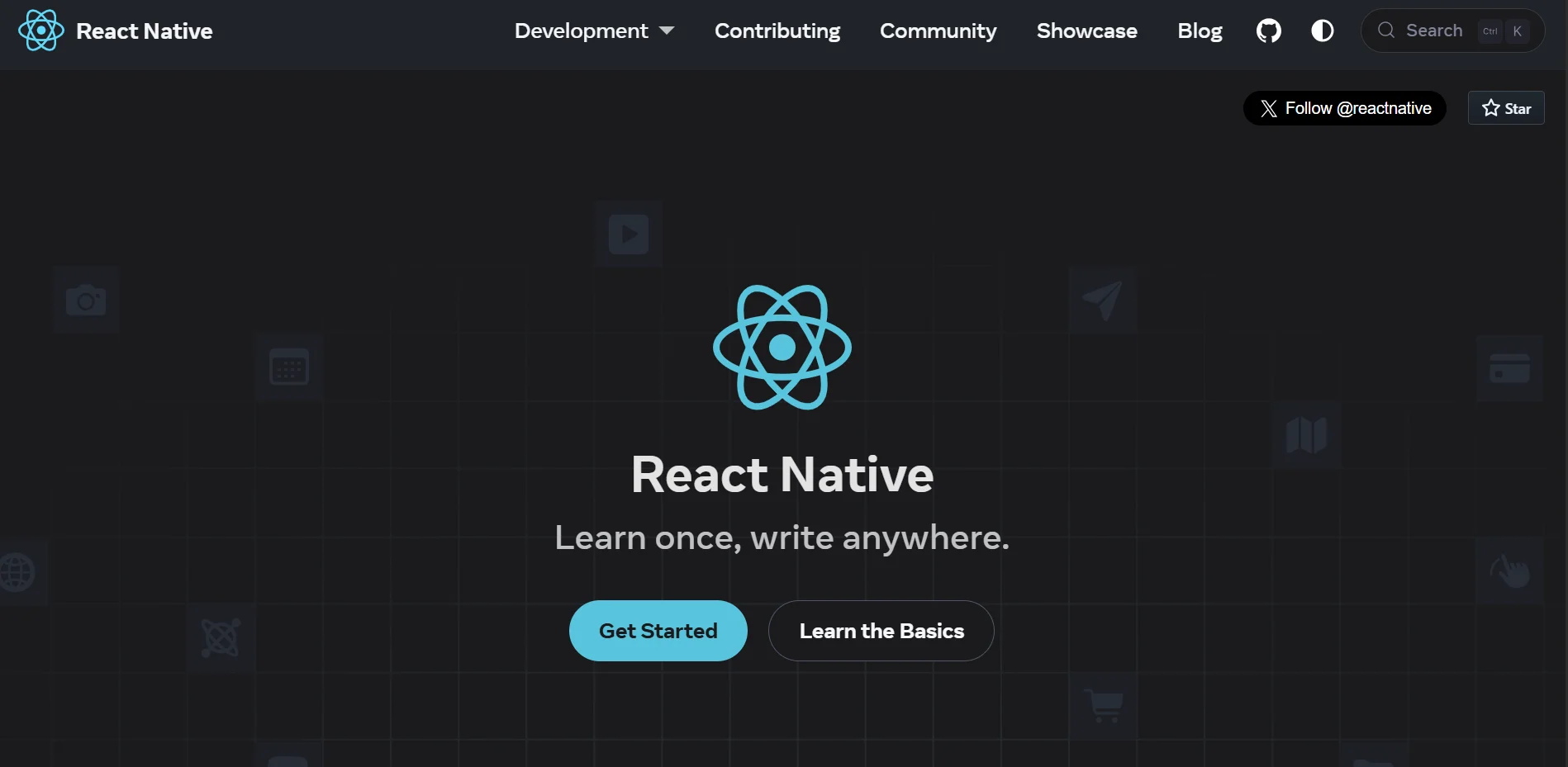
React Native is a popular open-source framework from Meta (Facebook) for building mobile apps with JavaScript. It adapts Facebook’s React library to mobile: components you write in JavaScript render as native UI widgets on iOS and Android. React Native has a large, active developer community and a rich ecosystem of libraries. Many well-known apps (Instagram, Airbnb, Discord) use React Native under the hood.
- Cross-platform: One codebase for iOS and Android apps, sharing logic and UI.
- JavaScript & React: Uses familiar web technologies; developers proficient in React can transition easily.
- Native modules: If needed, you can write native code in Swift/Objective-C or Java/Kotlin for performance-critical features.
- Hot reloading: See UI updates instantly during development.
- Large ecosystem: Tens of thousands of npm packages and community tools support React Native projects.
In summary, React Native offers a middle ground: apps feel mostly native with only one development language (JS). Its popularity and mature toolchain make it a top choice for teams with JavaScript experience.
2. Flutter: Google’s Cross-Platform Toolkit
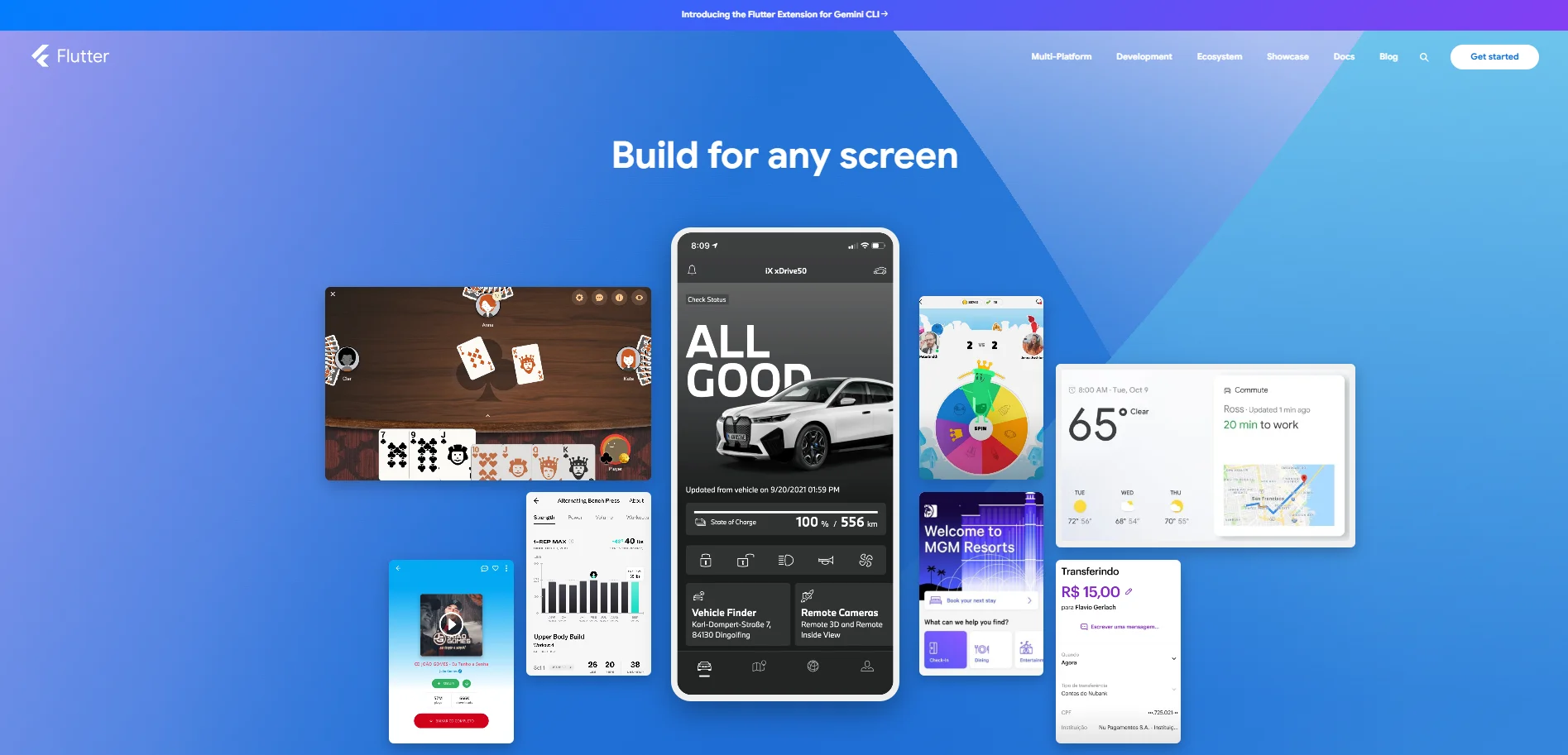
Flutter is an open-source UI SDK from Google. It lets you write one codebase for multiple platforms (iOS, Android, web, and desktop). Flutter uses the Dart language and its own rendering engine, which creates smooth, native-quality UIs. It includes a “hot reload” feature for instant updates during development. Flutter has become immensely popular; it now has over 1 million active developers and powers around 30% of new iOS apps. In practice, Google Pay, Alibaba, and many startups use Flutter for fast cross-platform development. Key benefits include:
- Single codebase: Build apps for iOS, Android, and the web with the same code.
- Rich UI toolkit: Includes pre-built widgets (Material Design for Android and Cupertino for iOS).
- Fast performance: Flutter apps compile to native code, yielding smooth animations.
- Hot reload: See design changes immediately without restarting the app.
- Growing community: Extensive documentation and community packages to solve common problems.
By combining high performance and a unified codebase, Flutter makes it easier to launch apps on multiple platforms quickly.
3. SwiftUI: Apple’s Modern iOS Framework
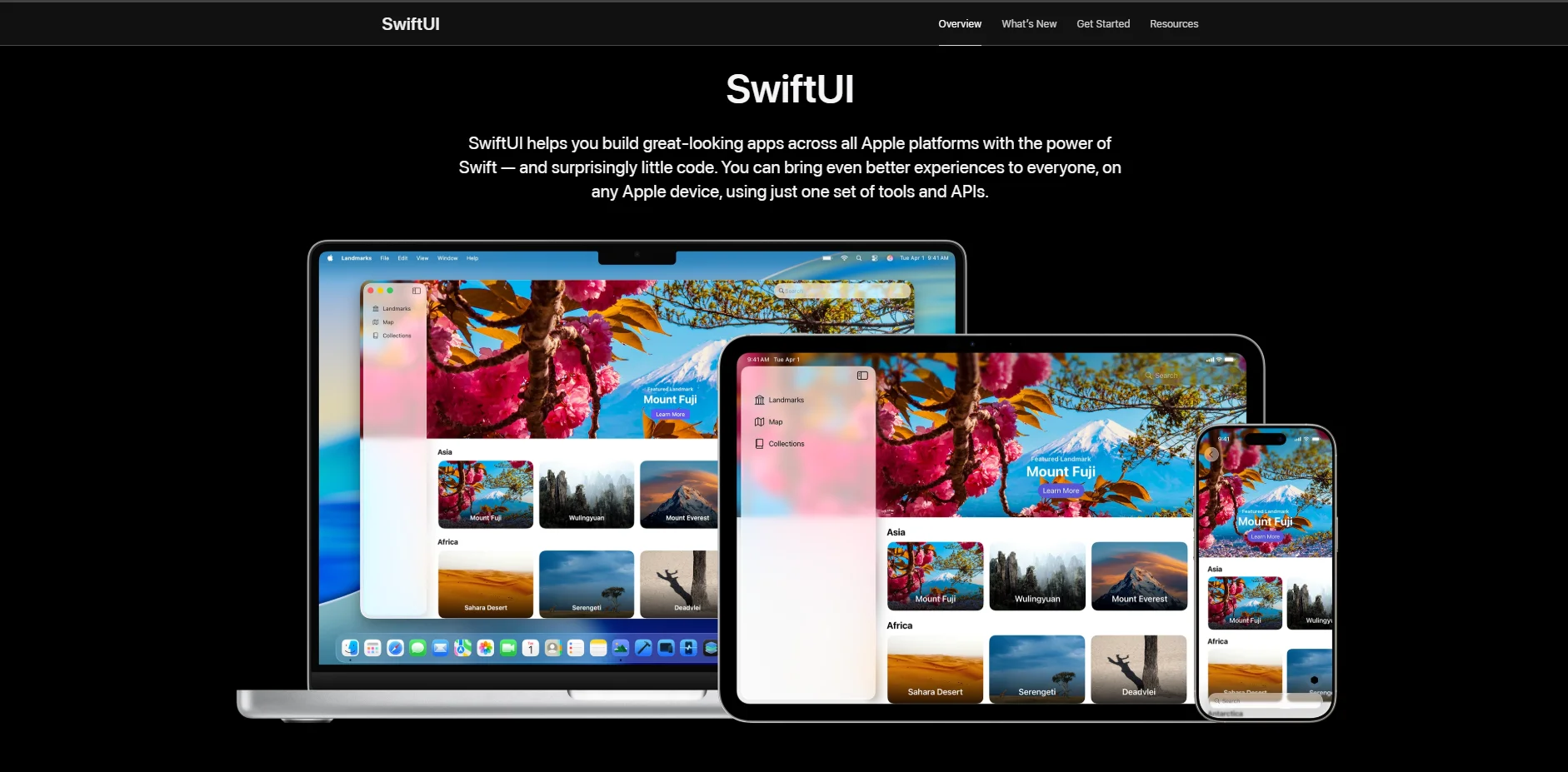
SwiftUI is Apple’s own UI framework introduced in 2019. It uses the Swift language and a declarative syntax to build iOS, iPadOS, macOS, watchOS, and tvOS apps. In SwiftUI, you describe what the interface should do rather than how to do it, which greatly reduces boilerplate code. Being Apple’s recommended approach, SwiftUI has deep integration with Xcode (including live previews) and delivers true native performance.
- Apple ecosystem: Build interfaces for all Apple devices (iPhone, iPad, Mac, etc.) with one framework.
- Less code, fewer bugs: Declarative design means writing fewer lines of code, which simplifies maintenance.
- Live previews: Xcode can show SwiftUI layouts in real-time as you code, speeding up design iterations.
- Strong defaults: Automatically adopts dark mode, Dynamic Type (font sizing), and other OS standards.
- Interoperability: You can mix SwiftUI and UIKit/AppKit in the same app if needed, easing gradual migration.
If your target market is primarily Apple users, SwiftUI is the logical choice. It lets you build modern, responsive iOS apps faster than the older UIKit approach, while still allowing access to every native API.
4. Jetpack Compose: Modern Android UI Toolkit
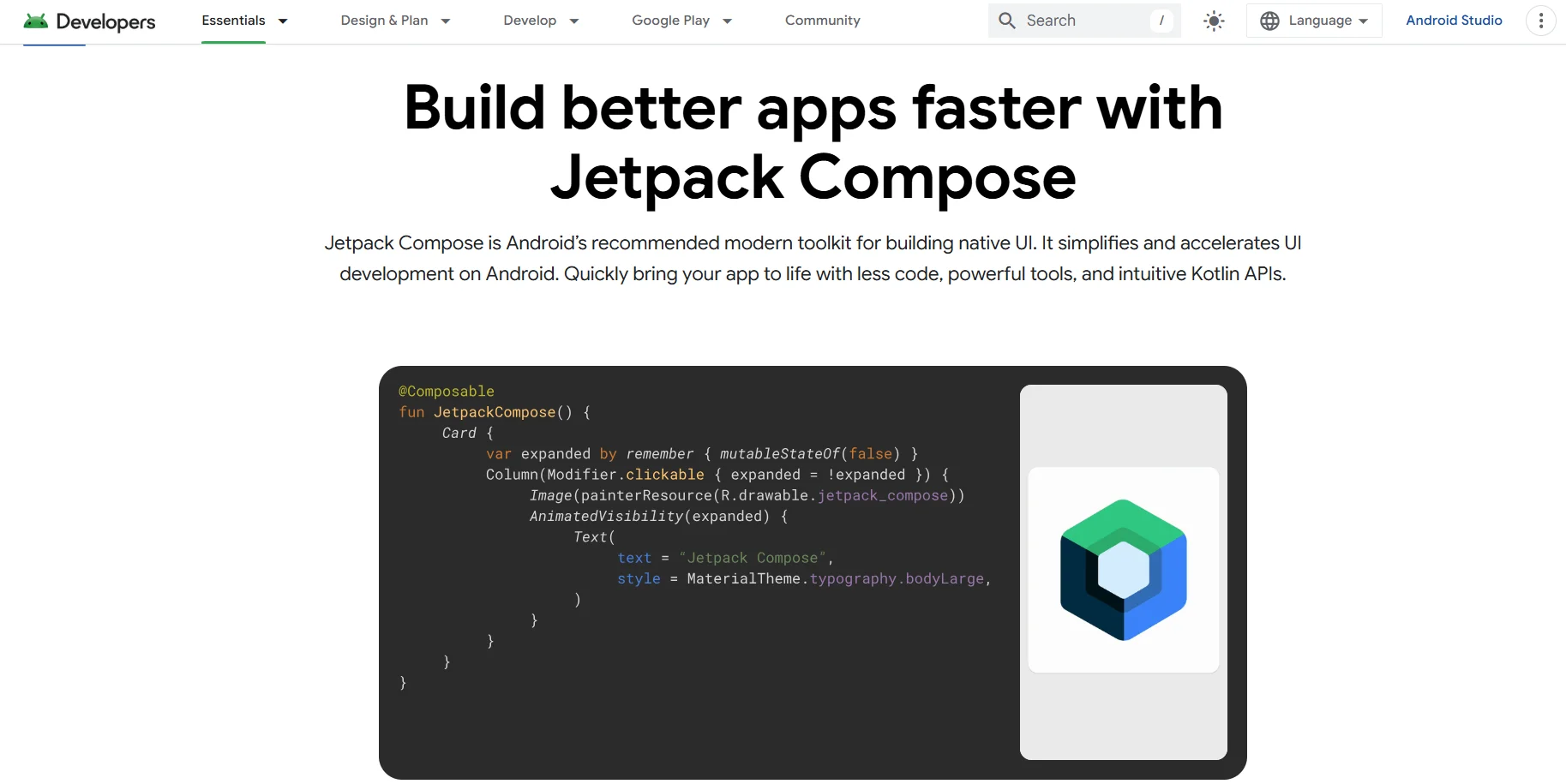
Jetpack Compose is Google’s modern UI toolkit for Android, replacing the older XML layout approach. It is Android’s recommended framework for building native UI, using Kotlin and declarative code. In Compose, you describe your UI in Kotlin functions, and the framework efficiently updates only the changed parts on screen. Google designed Compose to improve development speed and app performance.
- Kotlin-first: Designed to work with Kotlin, Android’s official language.
- Less boilerplate: No more XML layout files; UI logic lives alongside app code.
- Material Design: Includes built-in support for Material theming and rich components.
- Live previews and tooling: Android Studio supports live previews and editing of Compose layouts.
- Interoperability: Compose can interoperate with traditional Android Views, so you can adopt it piece by piece.
In short, Jetpack Compose makes Android app UIs faster and simpler to build. It “simplifies and accelerates UI development on Android” by letting you write expressive, concise code.
5. React (Web): Ubiquitous JavaScript Library
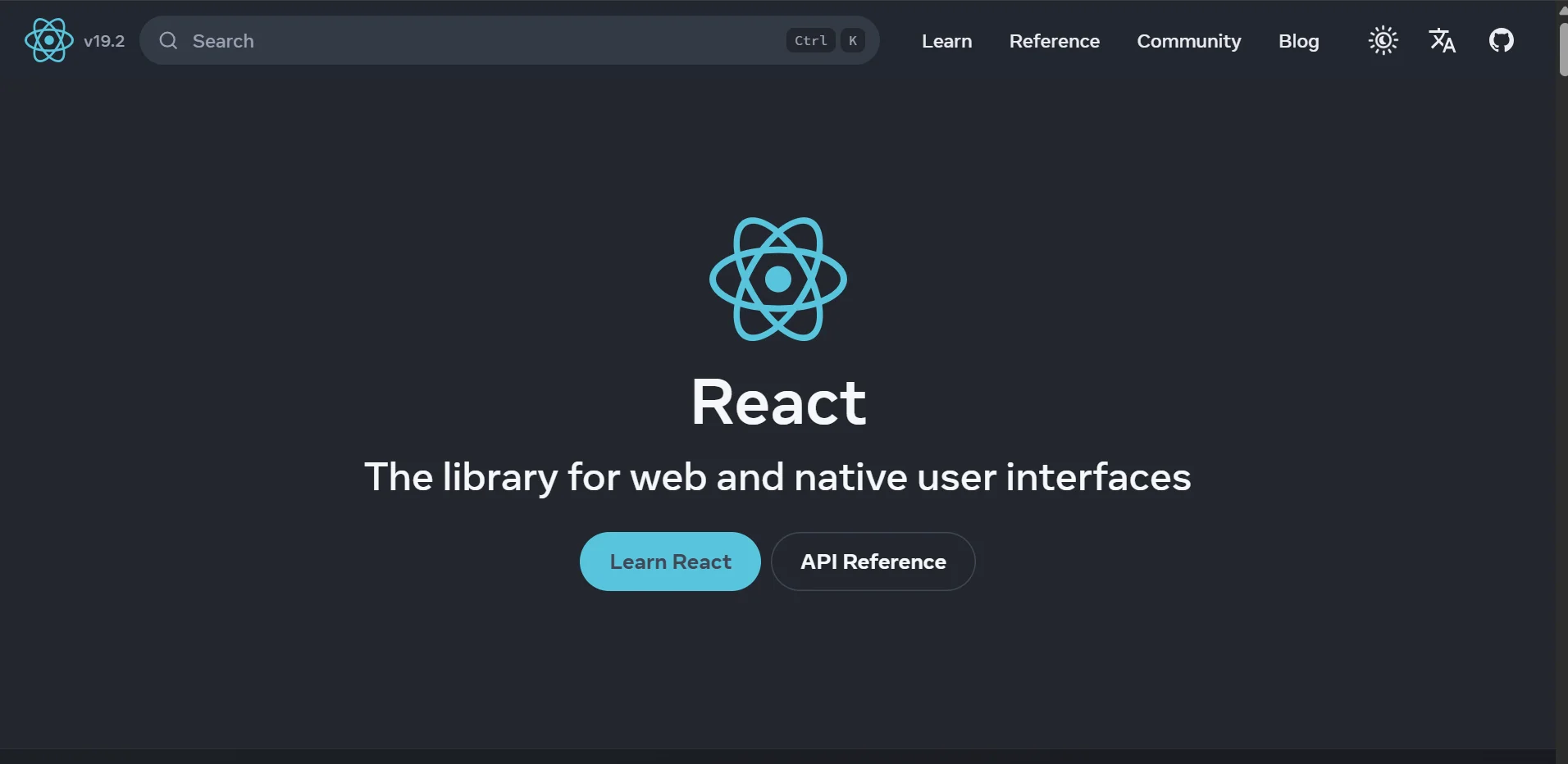
While React is technically a UI library rather than a full framework, it’s so widely used that it’s effectively a platform for web apps. Created by Facebook, React “revolutionized the web-based app landscape” by popularizing component-based architecture and the Virtual DOM. Today, React is the dominant tool for building modern single-page applications (SPAs) and websites.
- Component-based: Build reusable UI components (buttons, forms, etc.) that manage their own state.
- Virtual DOM: React updates only the parts of the UI that change, improving performance.
- Strong ecosystem: Libraries like React Router (routing), Redux (state), and Next.js (server-side rendering) extend React for full-stack apps.
- JSX syntax: Write HTML-like code in JavaScript files for clear, readable components.
- Large community: Massive ecosystem of packages and tutorials. Many companies and web projects rely on React.
React is ideal for developers familiar with JavaScript/TypeScript who want to build dynamic web interfaces. Its approach to building UI “helps create engaging pages” and even powers mobile apps via React Native.
6. Angular: Enterprise Web Framework

Angular is Google’s full-featured web framework for building single-page and enterprise applications. Written in TypeScript, Angular provides a complete solution out of the box, including routing, form handling, HTTP communication, and more. It uses a structured, opinionated approach (often MVC/MVVM) that can scale to large projects.
- TypeScript-based: Static typing and object-oriented features help manage large codebases.
- Built-in tooling: Angular CLI creates, builds, and tests projects quickly with best-practice defaults.
- Two-way binding: Synchronize UI and model state automatically (though newer Angular leans more on one-way data flow).
- Mobile support via Capacitor: Can be combined with Ionic/Capacitor to package Angular web apps as native mobile apps.
- Strong Google support: Backed by a major tech company and a mature ecosystem.
Angular shines in large-scale applications where consistency and maintainability are priorities. According to its documentation, “Angular offers a robust structure with a comprehensive range of features.” It’s less common for quick prototypes, but great for enterprise-level projects.
7. Vue.js: Progressive JavaScript Framework
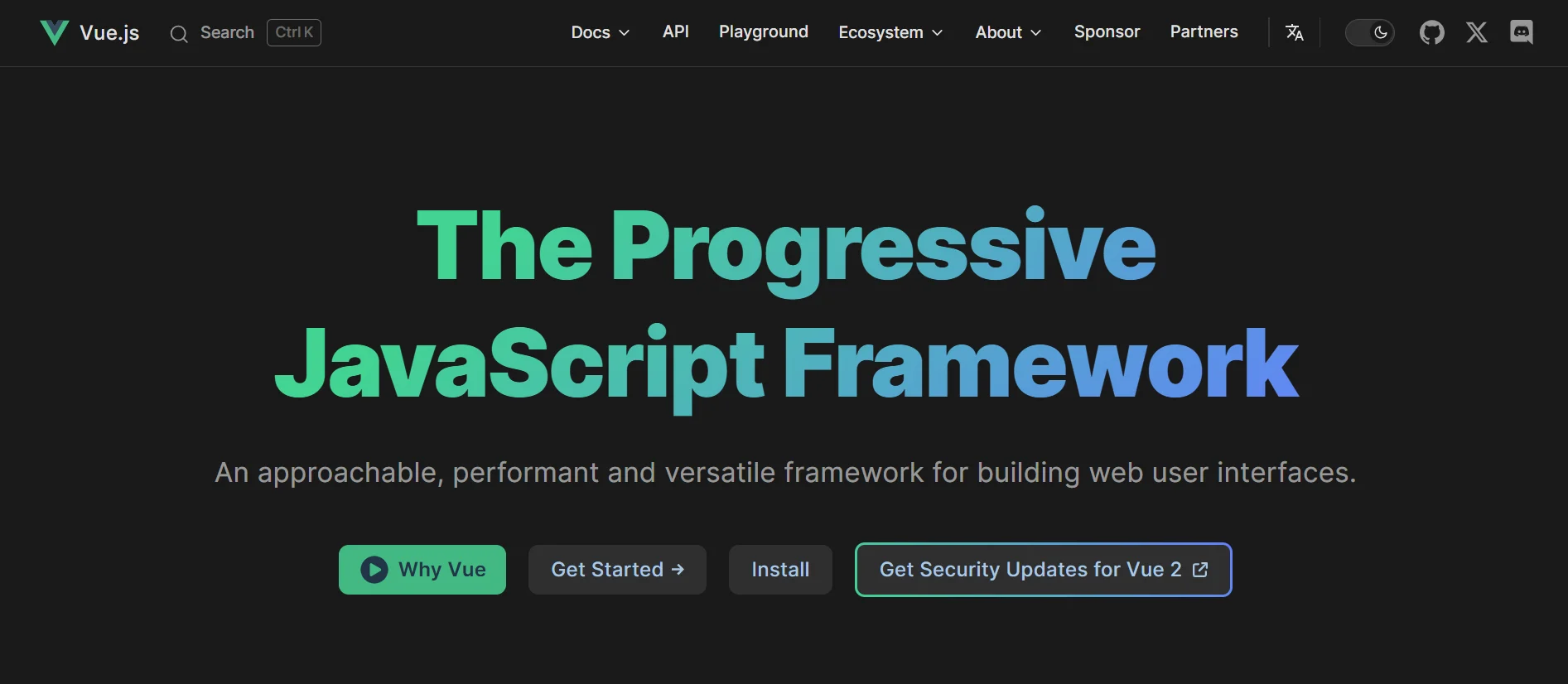
Vue.js is a progressive framework for building web interfaces. It is designed to be incrementally adoptable; you can plug Vue into parts of a page or build an entire SPA with it. Vue’s core library focuses on the view layer, offering a simple yet powerful reactive and component-based model.
- Easy learning curve: Its syntax is close to plain HTML/JS, making it simple for beginners.
- Flexible integration: Use Vue to enhance a static page or as a full framework (with Vue Router, Vuex, etc.).
- Lightweight and fast: A minimal core size enables fast load times for web applications.
- Rich ecosystem: Official libraries (Vue Router for SPA navigation, Vuex for state management, Nuxt.js for SSR).
- Community and tools: Active community, great dev tools, and plenty of plugins.
As the Vue docs say, “Vue is a JavaScript framework for building user interfaces” that provides a declarative component model. It’s favored by developers who want a simpler alternative to Angular or React. Because it’s so flexible, teams often use Vue for projects of any scale, from small widgets to full-featured web apps.
8. Ionic: Hybrid Mobile UI Toolkit
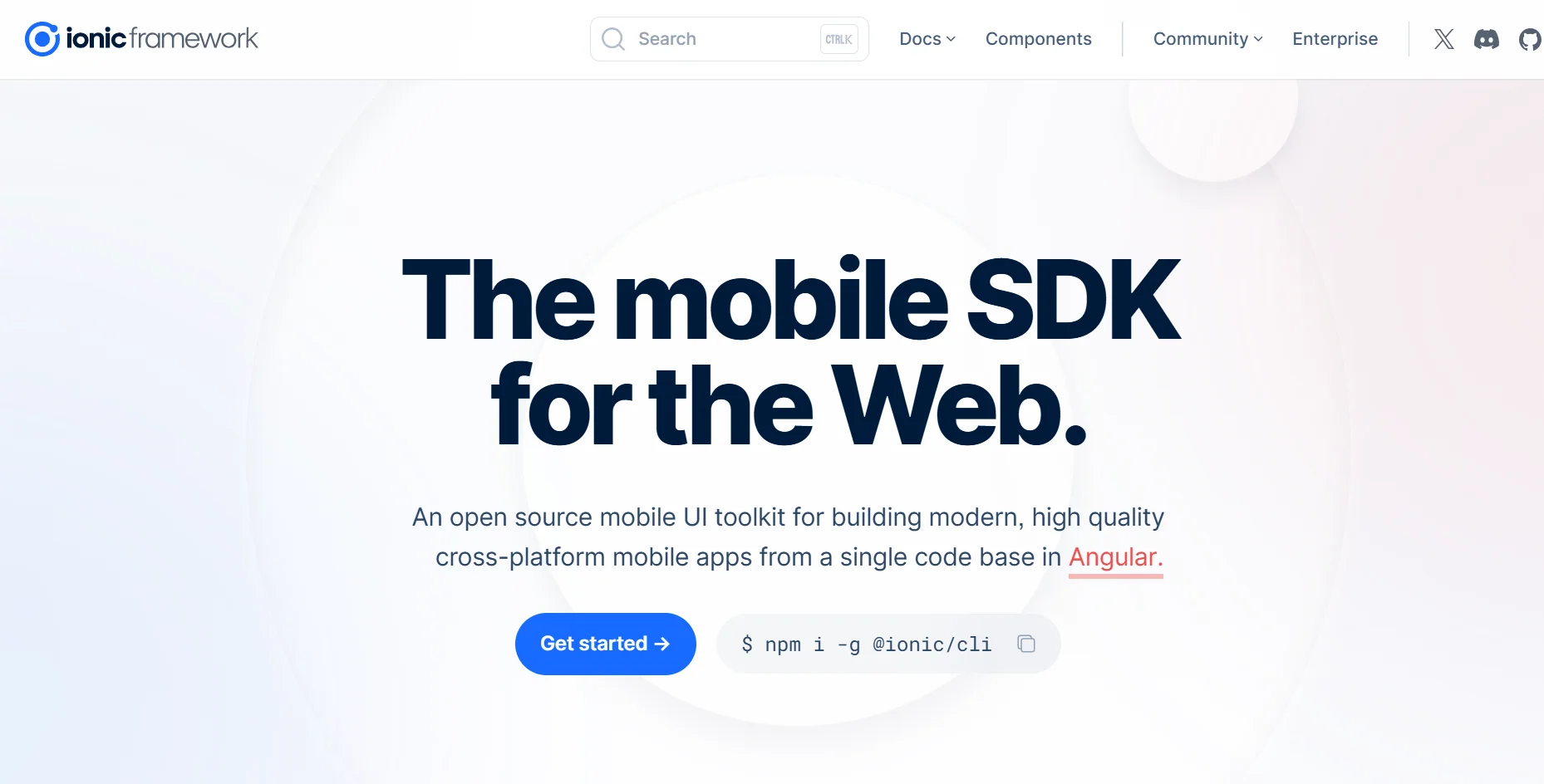
Ionic is an open-source toolkit for building cross-platform mobile apps using web technologies (HTML, CSS, JavaScript). It was originally built on Angular, but now supports React and Vue as well. Ionic wraps web code in a native container (using Cordova or Capacitor plugins) so that you can access device features, such as GPS or the camera. In essence, it brings web frameworks to mobile development.
- Cross-platform: Create one app that runs on iOS, Android, and the web.
- UI components: Includes a rich library of mobile-optimized UI components (tabs, lists, forms, etc.) with adaptive styles.
- Capacitor/Cordova plugins: Use plugins to tap into native device features (Bluetooth, accelerometer, etc.) from JavaScript.
- Familiar stack: Leverage web skills (especially Angular/React/Vue) to build apps.
- Active community: Over 5 million apps built with Ionic (including some enterprise apps).
According to official docs, “Ionic…helps developers build cross-platform mobile applications from a single codebase using web technologies”. It’s best for projects where quick development with shared code is more important than bleeding-edge native performance.
9. .NET MAUI: Microsoft’s Cross-Platform Framework
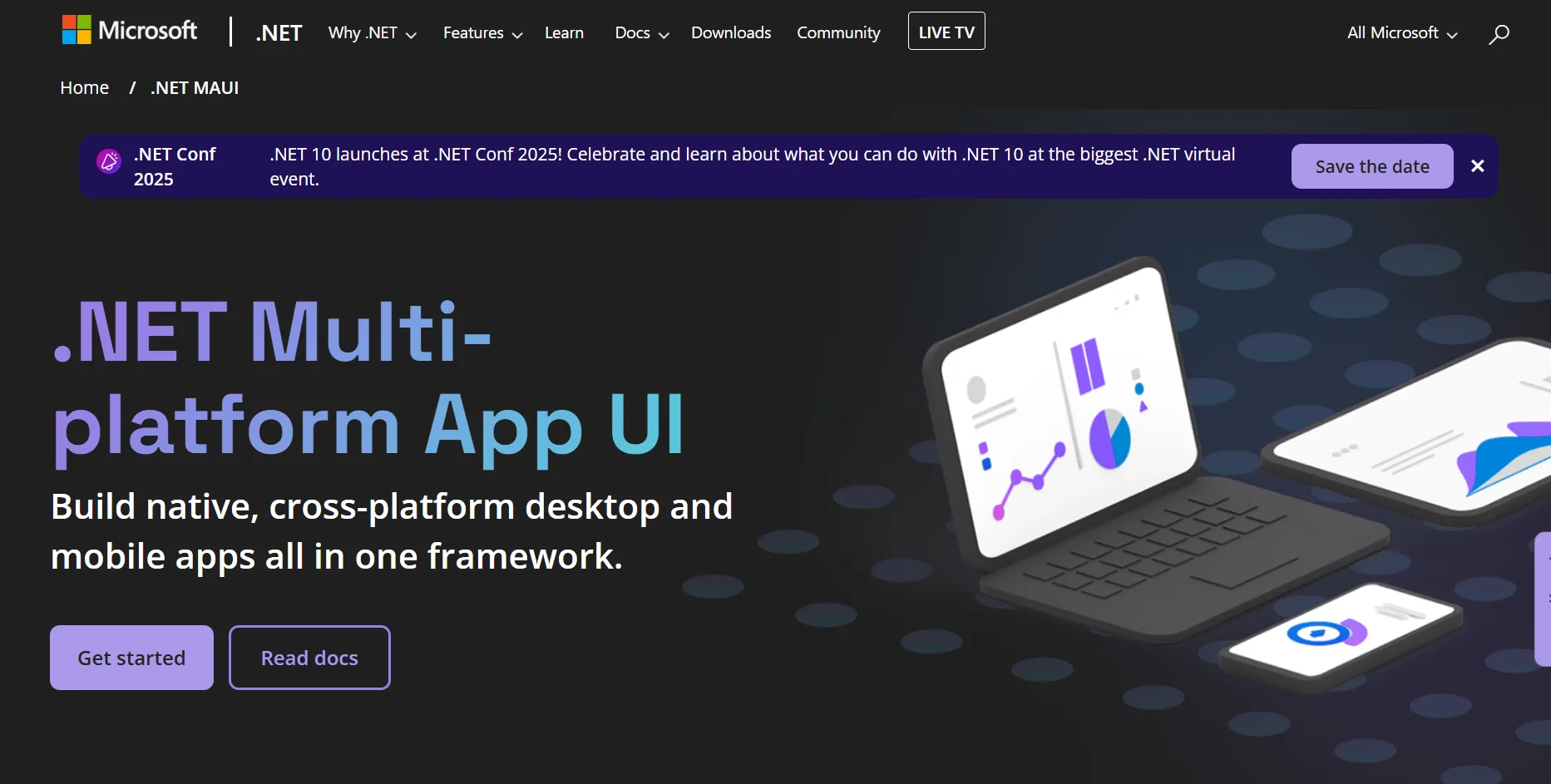
.NET MAUI (Multi-platform App UI) is a cross-platform framework from Microsoft for building native mobile and desktop apps with C# and XAML. It succeeds Xamarin. Forms unifies Android, iOS, macOS, and Windows development into a single project. Developers who already work in the .NET ecosystem often choose MAUI for its productivity and strong tooling.
- Single project, multi-target: One codebase (with multi-targeting) for Android, iOS, macOS, and Windows.
- Native UI controls: Provides access to native controls on each platform, ensuring apps feel truly native.
- XAML + C#: Use declarative XAML for layout and C# for logic.
- Hot reload: NET hot reload allows code changes while the app is running (speeding up iterations).
- Enterprise support: Backed by Microsoft, with integration into Visual Studio and Azure services.
As JetBrains notes, “.NET MAUI…allows developers to create native mobile and desktop apps with C# and XAML”. It’s an ideal choice for teams invested in Microsoft technology stacks, especially for enterprise and corporate applications.
10. Node.js with Express (Backend JavaScript)
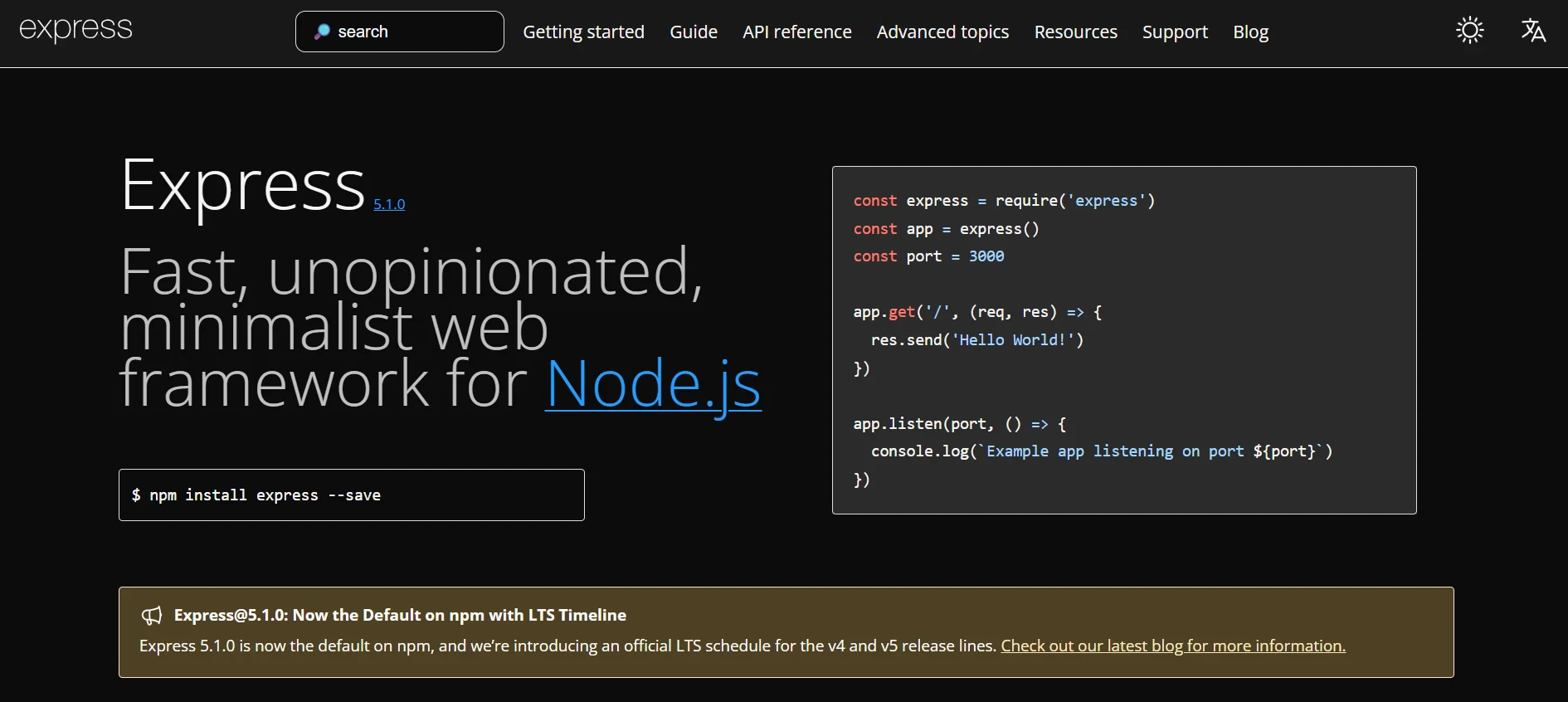
While not a front-end framework, Node.js deserves mention as a dominant backend runtime used in app development. Node.js uses an event-driven, non-blocking I/O model – making it ideal for fast, scalable network apps (like APIs for mobile or web frontends). When paired with Express.js (a minimal web framework), Node.js powers a huge portion of today’s web services.
- JavaScript on the server: Developers can use the same language on client and server, streamlining full-stack development.
- Non-blocking I/O: Handles many simultaneous connections efficiently, good for real-time features (chat, live updates).
- Lightweight & modular: Express provides a minimal core, letting you add only the middleware you need.
- NPM ecosystem: Thousands of open-source packages for everything (databases, authentication, file uploads, etc.).
- Large community: One of the most popular environments; plenty of tutorials and community support.
As one expert summary notes, “Node.js with Express is still one of the most used backend frameworks in app dev”, prized for speed and flexibility. If your app needs a REST API or real-time backend in JavaScript, this combination is a proven, lightweight choice.
Conclusion
These are the top 10 programming frameworks for app development in 2024–2025, covering both mobile and web. Each has its sweet spot:
- Flutter & React Native: Cross-platform mobile (build once, run everywhere).
- SwiftUI & Jetpack Compose: Native iOS or Android (best performance and UI look).
- React, Angular, Vue: Web apps (and hybrid mobile via wrappers).
- Ionic & .NET MAUI: Hybrid/cross-platform for teams using web tech or Microsoft stacks.
- Node.js/Express: Backend APIs to power your app’s data and logic.
Which one you choose depends on your project’s needs and your team’s skills. Some questions to ask: Are you targeting just iOS, Android, or both? Do you prefer JavaScript/TypeScript, Dart, Swift, or C#? Do you need rapid prototyping or enterprise-grade architecture? By weighing these factors, you can pick a framework from this list of the top 10 programming frameworks for app development that best fits your goals. Each framework above is well-supported and in wide use today, so your choice will help you move faster and build better apps for users
Build Your Next App with RedSun IT Services
Whether you’re planning to create a high-performing mobile app or a scalable web platform, RedSun IT Services offers expert app development solutions powered by leading frameworks like React Native and Node.js. Our experienced developers help you turn your vision into reality with user-focused design, seamless performance, and robust security.
Get in touch with RedSun IT Services today to start building your next innovative app with cutting-edge technology.